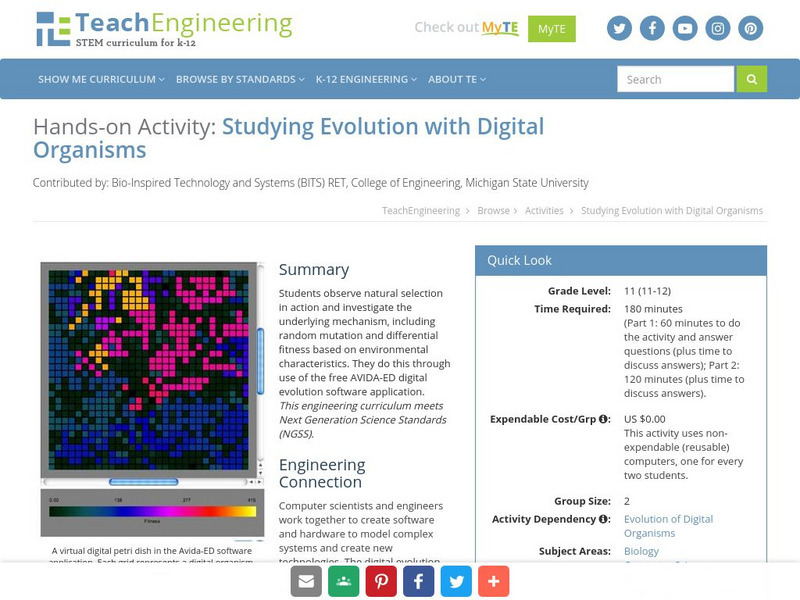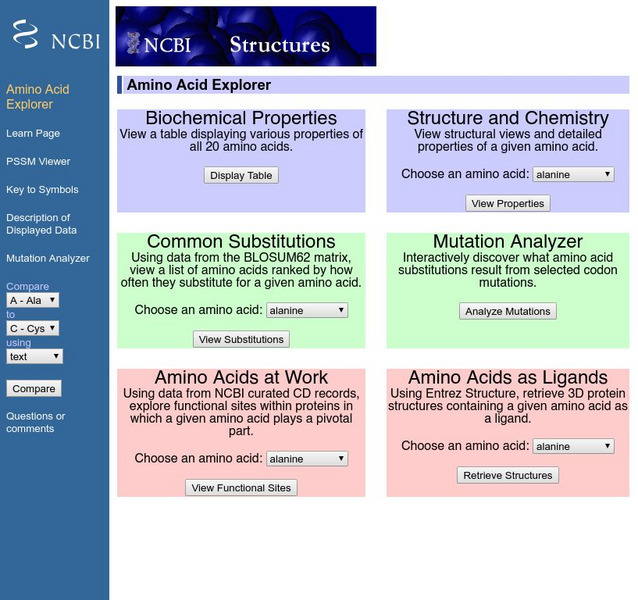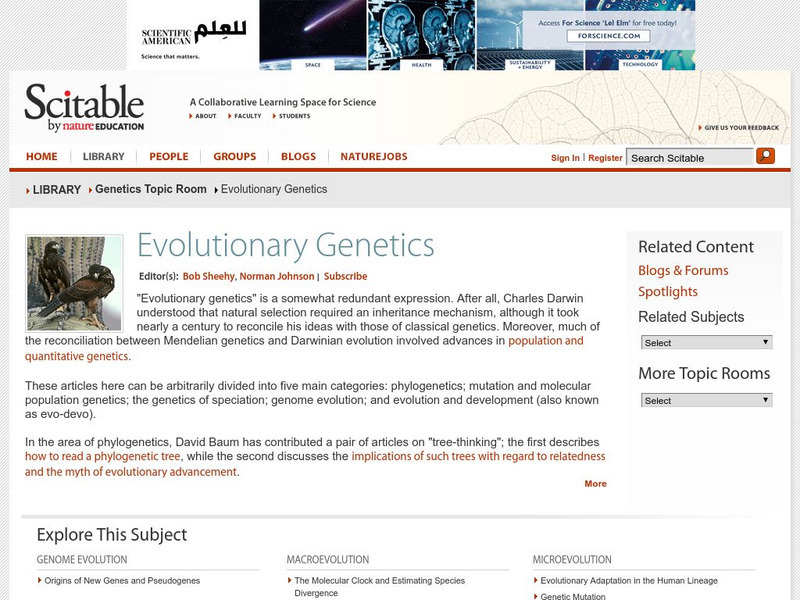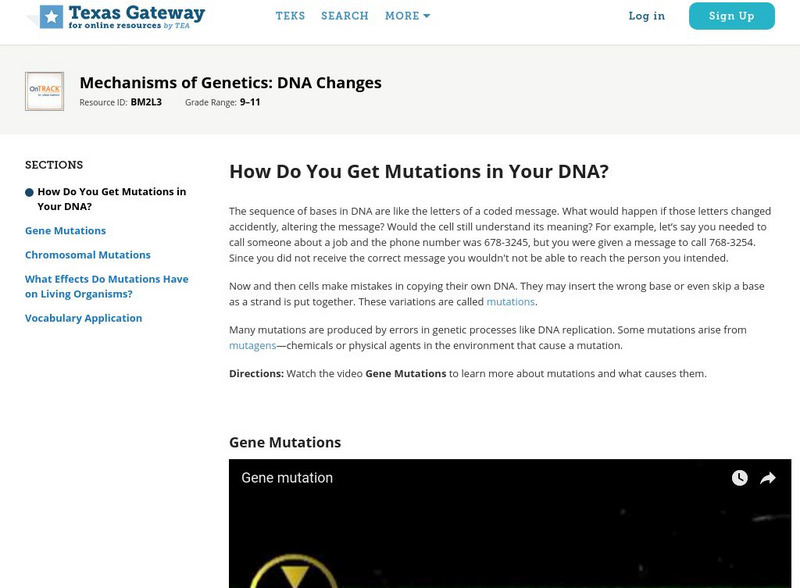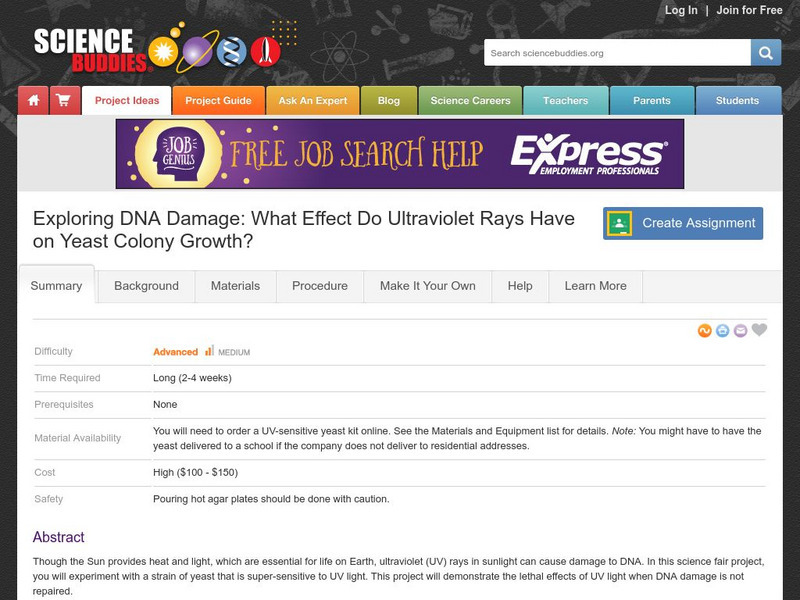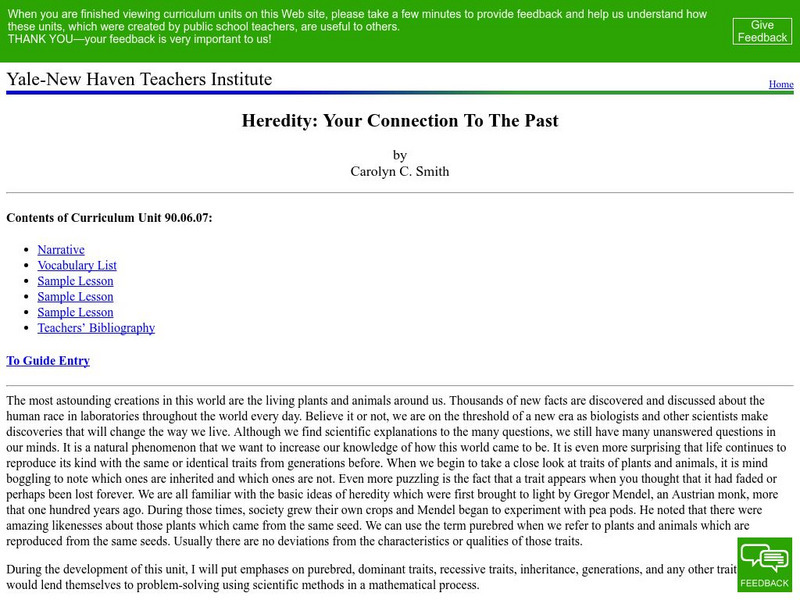Howard Hughes Medical Institute
Hhmi: Biointeractive: The Eukaryotic Cell Cycle and Cancer
Cell division is the only way single-celled organisms can reproduce. Learn more about cell division and explore the phases, checkpoints, and protein regulators of the cell cycle in this interactive. Find out how mutated versions of these...
TeachEngineering
Teach Engineering: Studying Evolution With Digital Organisms
Students observe natural selection in action and investigate the underlying mechanism, including random mutation and differential fitness based on environmental characteristics. They do this through use of the free AVIDA-ED digital...
PBS
Pbs Teachers: Cancer Warrior: How Cancer Grows
Follow the progression of a malignant tumor, beginning with the first mutation within a cell and ending with metastasis, the colonization of related tumors throughout the body.
National Institutes of Health
National Center for Biotechnology Information: Amino Acid Explorer
Anything you need to know about amino acids is likely to be available in this learning tool. You can explore the properties, chemical structures, and functions of all twenty amino acids, analyze mutations, and more.
Nature Research
Scitable: Evolutionary Genetics
A collection of articles on evolutionary genetics focusing on the topics of phylogenetics, mutation and molecular population genetics, the genetics of speciation, genome evolution, and evolution and development. Learn how to read a...
Howard Hughes Medical Institute
Hhmi: Bio Interactive: Gleevec Resistant Bcr Abl: Abl Kinase Domain
This site has an interactive 3D model of gleevec-resistant BCR-ABL which is a mutated form of BCR-ABL. Also found on the site is an STL file to 3D print the model.
Texas Education Agency
Texas Gateway: Mechanisms of Genetics: Dna Changes
Given illustrations or partial DNA sequences, students will identify changes in DNA and the significance of these changes.
PBS
Pbs Learning Media: Evolution on Double Time
In this excerpt from the PBS series "Evolution," award-winning science journalist Carl Zimmer describes how gene duplication may have been the key to the rapid evolution of the early stages of life on Earth.
Nobel Media AB
The Nobel Prize: Thomas Hunt Morgan and His Legacy
This detailed article from the Nobel e-Museum explores Thomas Hunt Morgan's career and research in genetics. Read how Morgan's work influenced later scientists and the modern scientific world.
Concord Consortium
Concord Consortium: Stem Resources: Confliction Selection Pressures
Investigate how selection pressures and natural selection influence populations growth with this computer model. Understand how a population changes when selection pressures are in conflict. Perform the virtual lab to see what happens to...
National Institutes of Health
Nih: Cell Biology and Cancer
An online resource for teachers that provides inquiry-based modules for learners to reseach cancer in an interesting and personalized way. Includes master copies of each module for teachers.
Capital Community College Foundation
Guide to Grammar and Writing: Plural Forms
A good explanation of Plural Forms for the student. Site also offers a quiz at the end. L.11-12.2b Spelling
Biotechnology Institute
Biotechnology Institute: Your World: Fighting Cancer With Biotechnology [Pdf]
This Biotechnology Institute issue focuses on the role of genetics in cancer. Find out about several types of cancer, the risks, treatments available now, and the treatments of the future.
PBS
Pbs Learning Media: Allopatric Speciation
These images from the Smithsonian Institution depict Nancy Knowlton's work with snapping shrimp in Panama. Knowlton found that the closing of the isthmus -- dividing the Pacific Ocean from the Caribbean -- resulted in new species of shrimp.
PBS
Pbs Learning Media: Molecular Clocks: Proteins That Evolve at Different Rates
In this graphic and article from "The Human Evolution Coloring Book" by Adrienne Zihlman, four different proteins from humans and horses are compared and the reasons each protein evolves at its own characteristic rate are discussed.
PBS
Pbs Learning Media: Ruminants
Why do cows chew their cud? This video segment from Secret of Life: "Accidents of Creation" describes the physical adaptations that have made ruminants some of the most important, and certainly the most efficient, plant eaters on earth.
Science Buddies
Science Buddies: Project Ideas: Dna Damage: Ultraviolet Rays and Yeast Colonies
In this biotechnology science fair project, investigate how DNA damage affects growth of yeast that are DNA-repair deficient. The Science Buddies project ideas are set up consistently beginning with an abstract, objective, and...
Science Buddies
Science Buddies: Blas Ting Flu Viruses
Remember going to the doctor and getting vaccine shots? It's no fun getting poked with a needle, but fortunately, a vaccine gives you protection against a serious illness for years to come. This project will show you why.
Science Buddies
Science Buddies: Neanderthals, Orangutans, Lemurs & You; A Primate Reunion
You have probably seen figures showing how human beings are related to chimpanzees, gorillas, and other primates. In this genomics science fair project, you will use bioinformatics tools to generate your own primate family tree.
Yale University
Yale New Haven Teachers Institute: Heredity: Your Connection to the Past
An indepth introduction to genetics as a whole with sample lessons, vocabulary, and bibliography. From the Yale-New Haven Teachers Institute.
Estrella Mountain Community College
Estrella Mountian College: Introduction to Genetics
This site explains genetic beliefs before and after Mendel, and also includes a section on Mendel himself and his experiments, entitled, "The Monk and his Peas".
Vision Learning
Visionlearning: Genetics: Gene Expression
Explore the connection of genes and enzymes in regards to heredity and genetics. Concepts associated with dominant and recessive traits are also presented.
Science Museum, London
Science Museum: Making the Modern World: Dna: Structure and Function
The learning module helps students gain a deeper understanding of the structure and function of DNA.
Other
Blackwell Publishing: Evolution: Adaptive Explanation
These pages are part of a site called Evolution that accompany a textbook by the same name. Mark Ridley is the author. There is a large amount of information available about adaptations and their role in evolution.



